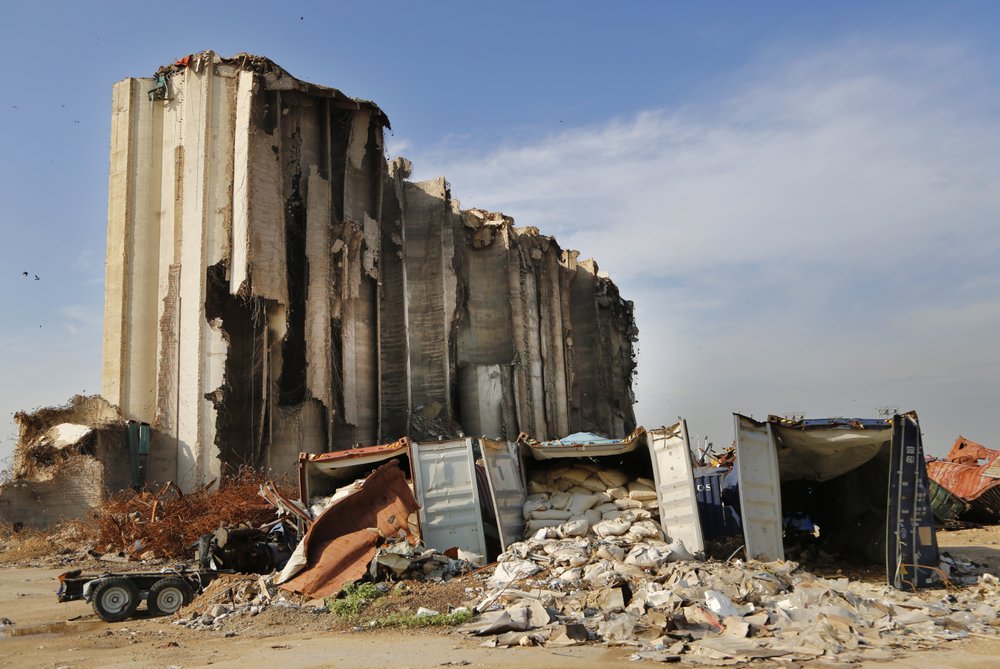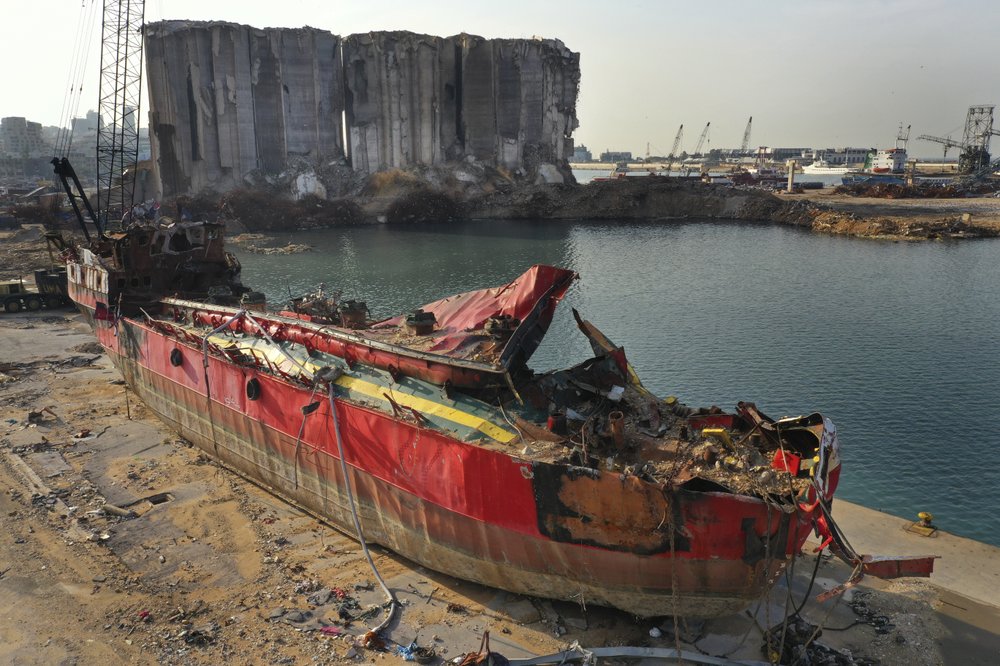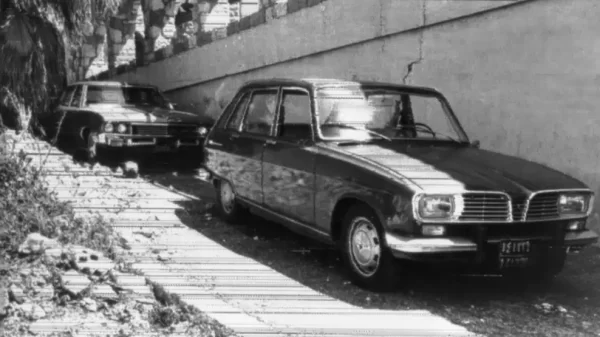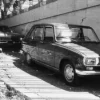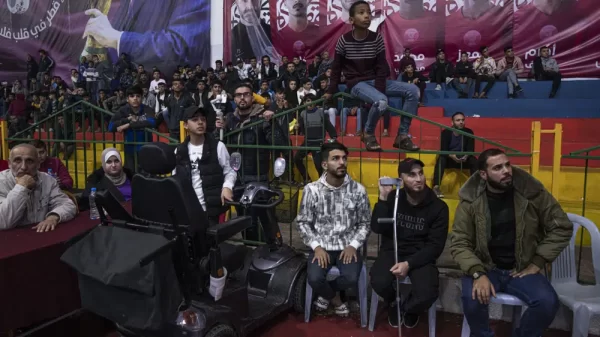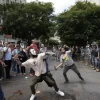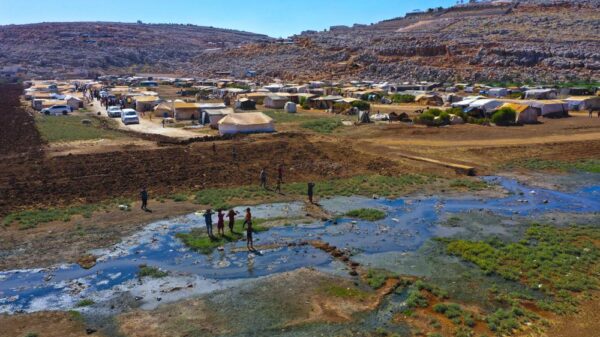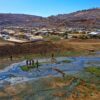Rubble, spilled grains remain around towering silos gutted in the massive August explosion at the Beirut port that claimed the lives of more than 200 people, in Beirut, Lebanon, Wednesday, Dec. 2, 2020. A heated debate is underway in Lebanon over the fate of the towering silos with some arguing the gutted silos could collapse at any moment, and must be demolished, while others call for the ruins to be preserved as a grim memorial. (AP Photo/Hussein Malla)
BEIRUT (AP) — Ghassan Hasrouty spent most of his life working at the silos in Beirut’s port, unloading grain shipments to feed the country even as fighting raged around him during the 1975-90 civil war.
Decades later, he perished under the same silos, their towering cement structure gutted by the force of the Aug. 4 explosion at the port, when 2,750 tons of improperly stored ammonium nitrates ignited in what became one of the largest non-nuclear explosions in history.
In a horrific instant, a burst of power ravaged Beirut. More than 200 people died and the horror and devastation scarred the survivors.
asrouty’s son, Elie, wants justice for his father and thinks the silos should stay as a “mark of shame” and reminder of the corruption and negligence of politicians that many Lebanese blame for the tragedy.
A government-commissioned study in the wake of the disaster says the 50-year-old silos could collapse at any moment and should be demolished, sparking an emotional debate among the city’s residents over how to preserve the memory of the tragedy.
In Lebanon, where a culture of impunity has long prevailed and where those behind violent attacks, bombings and assassinations have rarely been brought to justice, the debate is steeped in suspicion.
Sara Jaafar believes the government wants to obliterate the silos and move on as if nothing happened. “It is a reminder of what they did,” said Jaafar, an architect whose apartment overlooking the silos was destroyed in the explosion.
“I never want to lose the anger that I have,” she said.
Just days after the catastrophic blast, as public outrage mounted, Lebanese Prime Minister Hassan Diab stepped down, saying the country’s endemic corruption was “bigger than the state.”
The massive, 48-meter-high silos absorbed much of the explosion’s impact, effectively shielding the western part of the city from the blast that damaged or completely destroyed thousands of buildings.
The investigation into how such a large amount of dangerous chemicals was poorly stored for years under the nose of the port authority and the wider political leadership has dragged on. Rights groups and families are concerned it’s a tactic to protect senior officials, none of whom have so far been detained or charged with any wrongdoing.
More than four months later, rotting wheat is dripping from the shredded but still-standing silos, which stored up to 85% of Lebanon’s grain. Pigeons and rodents have found home among the wreckage.
Emmanuel Durand, a French civil engineer who volunteered for the government-commissioned team of experts, spent several weeks using a laser scanner to gather digital data for an analysis of the silos’ structure after the explosion.
Though they may look structurally sound from afar, the silos are tilted and their foundation is broken, which has caused vertical cracks in two of them. They could collapse at any moment, Durand said, although it is impossible to calculate when.
“Silos are very strong as long as they have integrity, just like an egg,” Durand said. “Now if the shell of the egg is slightly broken, it becomes very weak and you will have no difficulty in crushing the egg.”
The army has plans to demolish the silos with equipment that crushes concrete and rebar, Durand said. Kuwait, which financed the building of the silos in the 1970s, has offered to donate to rebuild them.
Then came a proposal by Fadi Abboud, a former tourism minister and member of the largest Christian party, the Free Patriotic Movement, to turn the port and silos into a “tourist attraction,” a site that would rival the Roman ruins in Baalbek.
Families of the victims protested, called it a heartless commercialization of the site where so many died.
“In their dreams!” vowed Gilbert Karaan, whose 27-year-old fiancée, firefighter-medic Sahar Fares, died battling the fire that broke out just before the explosion. “They will not profit off the martyrs.”
Jonathan Dagher, a journalist with the independent online media platform Megaphone, said Abboud’s words were in line with comments by Gebran Bassil, the party’s leader, who said the explosion could be turned into a “big opportunity” to secure international support for Lebanon’s cash-strapped government.
“These words are not an accident” and belittle the tragedy of what happened, Dagher said.
There are concerns the port blast could be treated in the same way as Lebanon’s 15-year civil war.
The war is not taught in schoolbooks. There is no memorial for the 17,000 missing from the war. A general amnesty allowed warlords and militia leaders to dominate the country’s postwar politics. After the war, downtown Beirut was quickly rebuilt, a high-end corporate hub emerging from the ruins and devastation.
Jaafar, the architect, said pushback against demolishing the silos stems from fear that a similar scenario, based on a “concept of amnesia” — if you don’t see it, it didn’t happen — is being engineered for the Aug. 4 blast.
Lebanese architect Carlos Moubarak says the gutted silos should remain in place, their sheer size forever an echo of the massive explosion.
“There is something very, very powerful about the silos,” he said. “They are now part of the people’s collective memory”.
Moubarak has designed a memorial park at the site, with the silos as a focal point, a remembrance ring at the crater, a museum and green space. The aim, he said, is to honor the victims and survivors while also capturing the spirit of solidarity among the Lebanese in the wake of the explosion. He is now trying to figure out ways to fund it.
Elie Hasrouty’s father and grandfather had both worked at the silos since they were built.
His father, Ghassan, 59, called home 40 minutes before the explosion to tell his wife that a new shipment of grains would keep him there late and asked her to send his favorite pillow and bedsheets for the unplanned overnight at work.
His remains were found at the bottom of the silos, 14 days later.
The silos should stay on as “a witness to corruption, so we can learn,” Hasrouty said. “Something must change.”
Copyright 2020 Associated Press. All rights reserved.
Source: https://apnews.com/article/international-news-beirut-lebanon-3aec16ceeebca5b6b2b132aed3cd49d8






















